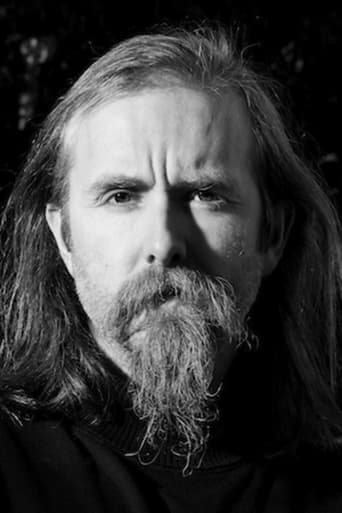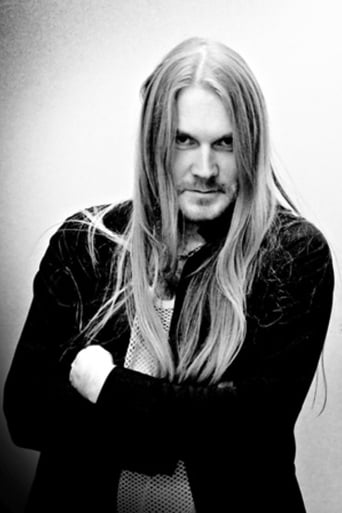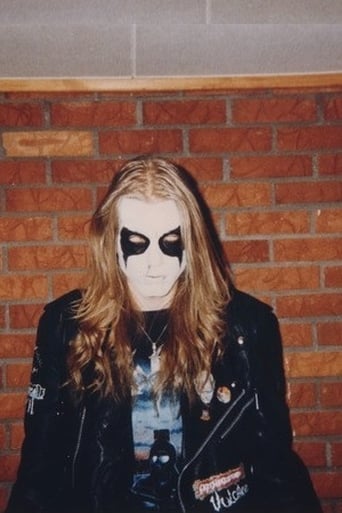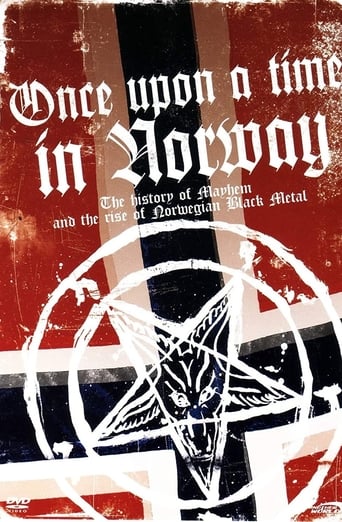
Interviews with central members of early Norwegian black metal bands about Mayhem, the early black metal scene and the crimes they committed.
Similar titles

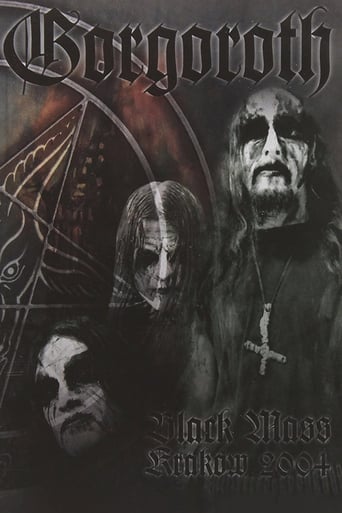
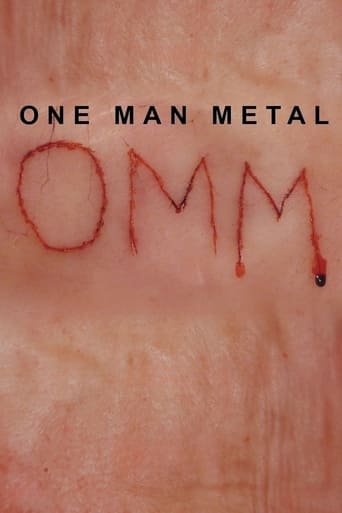
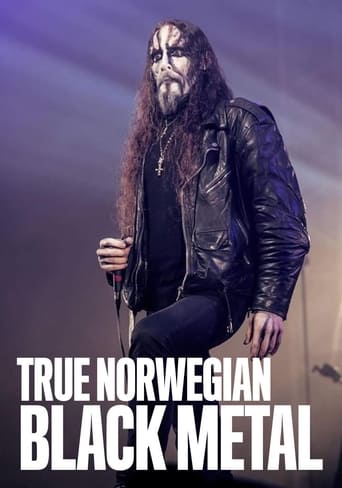
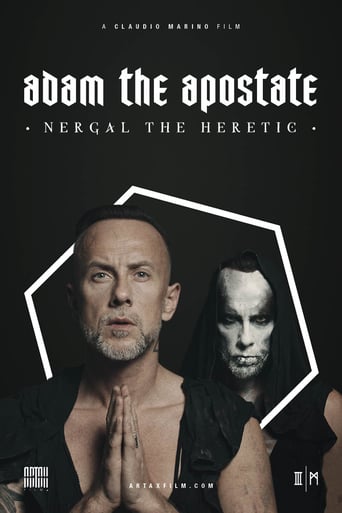

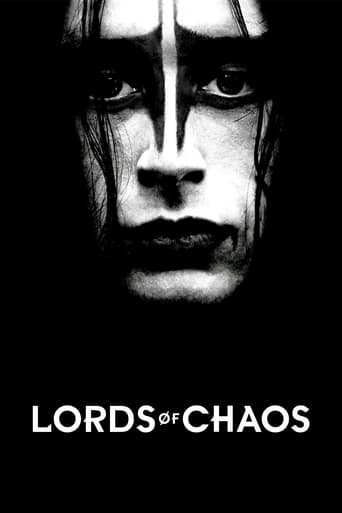
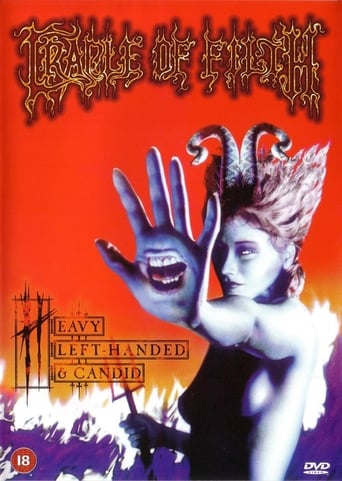

Reviews
Very interesting film. Was caught on the premise when seeing the trailer but unsure as to what the outcome would be for the showing. As it turns out, it was a very good film.
Funny, strange, confrontational and subversive, this is one of the most interesting experiences you'll have at the cinema this year.
While it doesn't offer any answers, it both thrills and makes you think.
The joyful confection is coated in a sparkly gloss, bright enough to gleam from the darkest, most cynical corners.
This one-hour film is a straightforward blow-by-blow chronological account of the early career of Mayhem, one of the pioneer bands of Norwegian black metal which since the late 1980s has exploded across the world and become Norway's most significant cultural export and contribution to international youth music and culture. Mayhem itself continues on an on/off basis with bassist Necrobutcher and drummer Hellhammer at the helm since 1995. The documentary concentrates on the band's history from its 1984 founding by guitarist Oystein Aarseth aka Euronymous and Necrobutcher through its revolving-door personnel up to and just a little beyond Euronymous's murder by Varg Vikernes in 1993. The film is good and very informative but I feel it could have lightened up on the information and gone for a more general overview of Mayhem's history and the birth of black metal.The film's structure is dominated by interviews with various members and ex-members of Mayhem including Necrobutcher himself, Kjetil Manheim and Billy Nordheim, and various friends and associates including Darkthrone guitarist Nocturno Culto, musician Anders Odden and ex-Emperor man Tchort. Almost immediately the major focus of the interviews is Euronymous, in particular his attempt to dominate and control the music's development and direction, and his eccentric character and bizarre sense of humour: these factors led directly or indirectly to his death. There is some discussion of Mayhem's musical and philosophical inspirations and of the band members' desire to create fast, aggressive and extreme music with the intent to shock. The musicians admit to flirting with Satanic beliefs, Nietzschean philosophy in a rather superficial way, nihilism and Aleister Crowley's Thelema philosophy: anything that legitimised and support their desire to shock and rebel against perceived traditional authorities in Norwegian society. There is little investigation in the film of the philosophical underpinnings of black metal apart from the musicians' own observations otherwise.As the film progresses, slowly but surely – there is a lot of talk and the detail about what Euronymous got up to, his political beliefs and his attempt to run a record shop and label is immense – viewers get an inexorable sense of progress towards the moment when Euronymous is killed so when the murder does happen, it comes as an emotionless, matter-of-fact anti-climax. Perhaps the film-makers' approach to making the documentary is just too calm and measured for the subject matter. Even the discussion of various church burnings that took place around Norway, including the destruction of the historic Fantoft stave church (it was rebuilt by 1997), in the early 1990s by fanatical black metal fans and hangers-on appears relatively unemotional, at least to my Australian senses. Norwegians are such cool, calm and collected characters! As would be expected, excerpts of early Mayhem songs are played here and there though in my opinion there is just not enough music to carry the film. The overall tone can be very dry, even intellectual. The passage dealing with Swedish vocalist Per Yngve Ohlin, his psychological problems (he was possibly borderline schizophrenic), a near-death experience as a child and his gunshot suicide comes across as very clinical. With a film like this, there needs to be a fair amount of music throughout the proceedings to convey a sense of urgency and passion; to help viewers understand the power of black metal and how it inspired a small group of socially alienated individuals; and ultimately to inspire viewers themselves to find out more about the early Norwegian black metal scene and check out classic works like Mayhem's first album "De Mysteriis Dom Sathanas", Emperor's "In the Nightside Eclipse" and Darkthrone's "A Blaze in the Northern Sky".Maybe the documentary could have concentrated less on the details of Mayhem's history and a little more on issues such as the cultural policing of the extent and boundaries of black metal vis-a-vis death metal and other forms of heavy metal, an obsession beloved of heavy metal magazines and websites; the rivalry between Norwegian black metal bands and Swedish death metal bands which reflects past historical resentments; when talking about doing something itself becomes dangerous if it inspires others to carry out the act spoken of; and burning churches as a way of gaining acceptance into a social network and later gaining power over it. There's an interesting diversion when interviewees talk about why Euronymous took photographs of Dead's death scene: was Euronymous really that twisted or did he take the photos as a way of "proving" to himself and to others that Dead really was dead? Many people find accepting a piece of news difficult until they have seen it for themselves on the TV news or in the newspapers.The narrow focus of the documentary also means an elephant in the room is completely missed: just what social conditions prevailed in Norway in the 1980s that a group of young men, well brought up, highly intelligent and very likable, should feel alienated from society enough that they find relief in playing extreme music and through that end up involved in extreme behaviours such as beating up homosexuals and elderly people, burning churches and killing people? Does Norwegian society or any other advanced Western society for that matter) provide adequate creative outlets for youth so that when they do things that threaten to get out of control, there is an agency or a code of etiquette or conventions that can provide them with advice and guidance so they can rein in their impulses themselves? A lesson that could be learned from this documentary is missed.
Once Upon A Time In Norway is one of a few films that try to address the history and meaning of Black Metal.This film is not a masterpiece by any means. Any definitive film about Black Metal would have to address the meaning behind a movement that was substantially aesthetic in its philosophical tendencies. The "just the facts" approach taken in this film is arguably unfair to Black Metal, and unfair to the audience in that they will not necessarily understand WHY; the film arguably trivializes the whole scene.Nevertheless, this film is very useful when viewed with better known documentaries on the same subject, like "Until the Light Takes Us (2008, which failed to give any real idea of the actual history of the Norwegian Black Metal scene.
Top Streaming Movies













